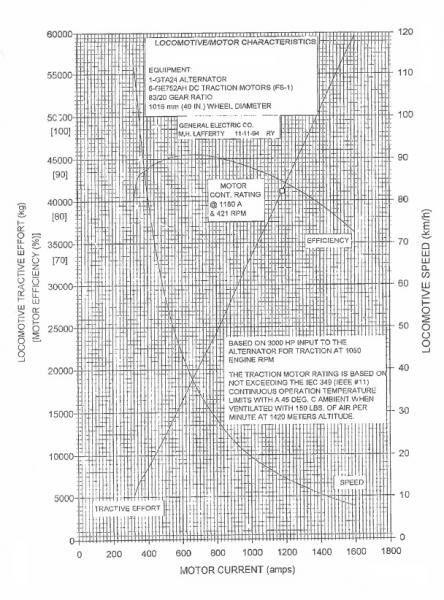 Matej Pacha, on 25 July 2013 - 09:13 PM, said:
Matej Pacha, on 25 July 2013 - 09:13 PM, said:
See my post in the physics section on the emulation of teh current TE curve od a series motor, The data for the emulation came from to sets of graphs, the first being I to TE for an EMD D77 motor, the second another set graphs for a large series wound industrial motor. The two sets of graphs almost mirrored themselves for the current V torque relationship.
Quote
This is interesting. Is this implemented in the DC/DC and AC/DC locos too or just AC/AC? Normally the nominal force/current is somewhere on the half way to the maximal force and the traction motor can be current-overloaded (the diesel engine cannot be power-overloaded).
AC/DC machines, info comes from the maintence manuals for the GE Dash 7 and the EMD GP40. Also the F7 drivers handbook states immediately after starting one can put the throttle up to at least notch 4 without any problems, this implies even the early machines possibly had some kind of current limiting. An interesting note here is it appears nearly all EMD drivers handbooks say this, a number of drivers a spoke to did not realise you could do this until they checked there drivers notes.
The limiting has a slightly different charteristic between the Dash 7 and the GP40, this is probably due to the Dash 7 appears to use electronics for regulation where as the EMD items of this vintage use magnetic amplifiers (a specialised form of transformer controlled by a an auxilary winding passing DC current). The Dash 7's have a specified max I for each notch, once the control gets below the constant power section. the control system will not let the current increase any further. In the EMD the current does increase beyond this point, the altenator though acts is if there is a virtual 0.4 ohm resistor in series with it, Note this is my interpretation based on the loco's altenator output current and voltage graph. I can supply these diagrams if required.
Both the EMD and the GE manuals state one should be able to go straight to Notch 8 on startup without overloading the motors (at least in the short term). EMD machines can almost certainly be set up so the driver can overload the traction motors.
Lindsay

 Log In
Log In Register Now!
Register Now! Help
Help









